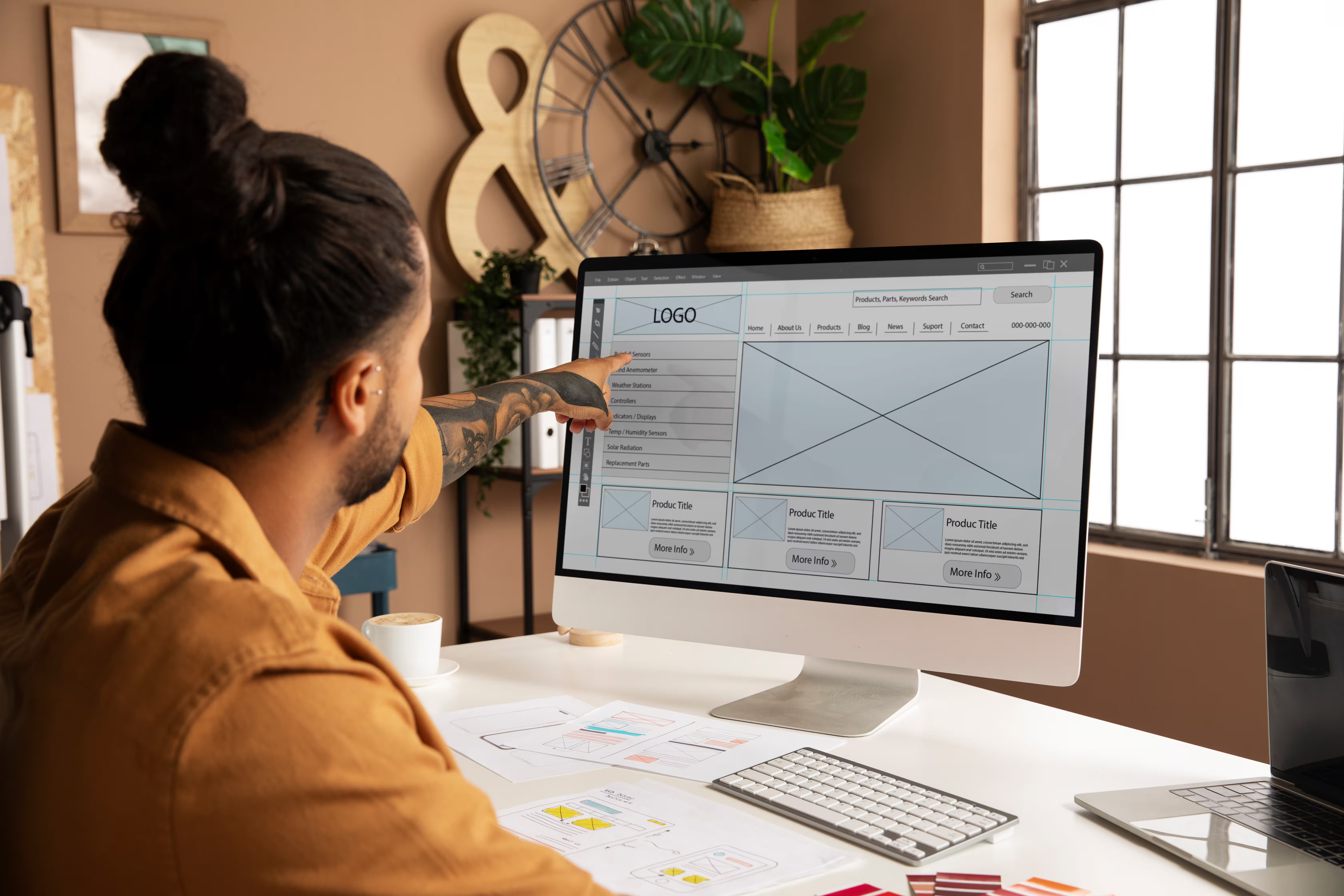In this article, you’ll find some of the most common reasons for website migration and learn about all the necessary steps you need to take if you want to migrate your existing WordPress site to Webflow. However, this is not a full guide.
If you would like to move your existing WordPress site to Webflow, download this free WordPress to Webflow migration guide that we prepared which leads you step-by-step, letting you migrate without the hassle.


The difference between WordPress and Webflow
Before you move on with your migration, it's nice to know the difference between the two platforms.
What is WordPress?
WordPress is an open-source content management system (CMS), powering over 42% of all the websites on the internet. Its plugin architecture and a template system make the learning curve relatively small. Designers control the design of their website with themes while adding new features with plugins. When using WordPress, designers have to handle website performance, and security by themselves.
What is Webflow?
Webflow is an online platform that gives you the power to build responsive websites without writing a single line of code. Designers get the power of CSS, HTML, and JavaScript in an easy-to-use visual canvas. With underlying code still accessible, Webflow allows complete design freedom. Webflow goes even further and can handle hosting, security, and website performance itself.
For a more detailed comparison of WordPress and Webflow, read the blog article where we dive deep into the pros and cons of both web builders.
What's even the point of moving my WordPress site to Webflow?
64% market share is extra proof of how popular and powerful WordPress is. Its plugin architecture and template system make the learning curve relatively small. Designers control the design of their websites with themes while adding new features with plugins.
If WordPress is so popular, why would you even migrate your existing site to Webflow? Well, every platform has its own cons, no matter how widespread and used it is. WordPress is no different.
Some of the most common reasons to decide on website migration are:
- Lack of design freedom. While Webflow allows you to tweak and design even the tiniest element on a site, WordPress can be quite restrictive when it comes to this. It doesn’t allow you to implement certain designs, features, and functionalities that you would want.
- Buggy code. WordPress offers a wide variety of beautiful themes that serve as the foundation of your site. However, using a WordPress theme can make the underlying code very buggy. This results in your website running slow, having a lot of errors, or even crashing completely. Not fun.
- Never-ending updates. The plugins you are using and WordPress as software need constant updates to keep working. The thing is that plugins are just extensions and not core parts of WordPress, so combining the two in a single website is extremely fragile. Every time one of them updates, there is a chance of malfunction or an unwanted change in the website's appearance.
- You are glued to using a theme. If you don't know how to code, good luck making anything custom in WordPress. You will be stuck using one of the available themes. No matter if you can pick among thousands of them in the WordPress library, every single one has some limitations. If you want to separate yourself from the noise and build a unique website, you need coding knowledge. Learning how to code is the only way of deploying a custom website on WordPress.
Before you migrate, there's just one thing you have to do
Before migrating your WordPress site, there is one extra step you must take to make sure everything goes as efficiently as possible.
While your site is still on WordPress, you should:
- Perform a sitemap analysis.
- Create and set up a staging website.
- Export database.
- Identify page and meta tags.
When you have all of those ready, you can get started. Here’s a quick overview of the steps you’ll have to take in order to move your existing WordPress site to Webflow:
- Export WordPress content (easy to do with a plugin).
- Import WordPress content to Webflow.
- Migrate the images.
- Take care of SEO.
- Set up DNS settings.
Final thoughts
A website is a precious asset and often the first contact point between you and your next potential client. But a website is also very fragile, meaning that performing the entire migration process without an expert in this field can hinder your performance. Executing the migration poorly can lead to broken design, 404 errors, and lost SEO efforts. But even though it might take a bit of time to transit, the results are worth the effort.
That’s why we created this WordPress to Webflow migration guide to help you through the entire process. Following it will help you perform migration the right way, without losing all your efforts.
If you still feel overwhelmed or lack a technical team at your company, delegating these tasks to professionals might be a good idea.
At Flowout, we're a team of Webflow Experts that will help you perform the process and optimize your new website for maximum performance. No contracts or surprises. Fast turnaround.




















